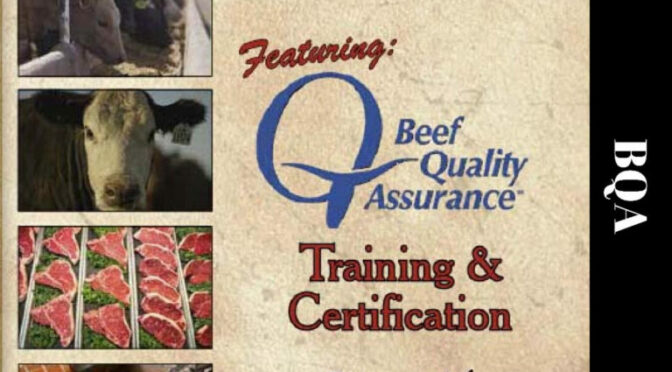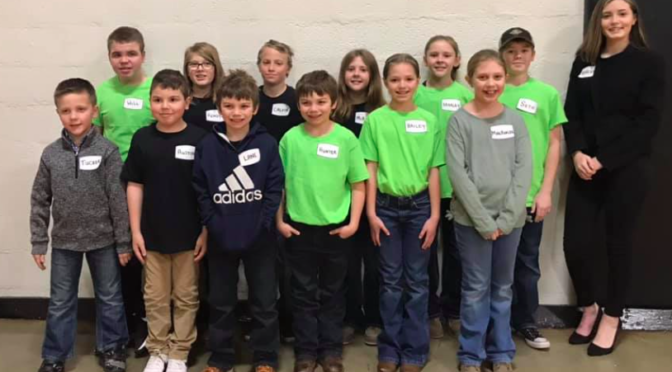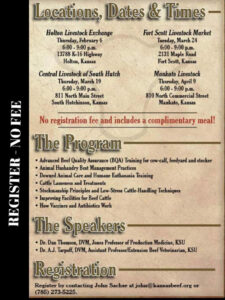
Category Archives: K-State Extension
Fruit Trees Should Be Pruned Now
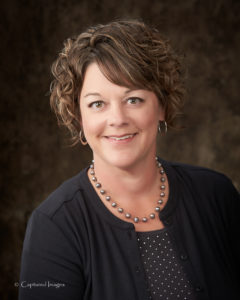
District Extension Agent, Horticulture
Southwind Extension District
111 S. Butler
Erie, KS 66733
Office: 620-244-3826
Cell: 620-496-8786
It’s been a long winter. I can remember many times when February brought stretches of really nice spring-like weather. Not this year! Are you itching to get out of the house and do something productive in the landscape? If you have fruit trees, now is the time to prune. A little planning ahead with fruit trees, such as pruning, can mean big rewards later in the growing season.
Are you like many who are “afraid” to prune? Don’t be. When done correctly, pruning is an essential component of growing a healthy, productive fruit tree. Fruit trees should be pruned every year and for several reasons. The first is the development of a strong tree structure. Pruning should begin when the tree is planted and continued each year thereafter. Another reason to prune is the increased penetration of sunlight for the development of fruit buds and for the fruit to mature properly.
Trees can be pruned this early (winter) because they are dormant. This can be done in January, February and even early March. Pruning when trees are dormant makes it easier to see undesirable branches because leaves aren’t present. It is important to do any pruning before dormant sprays are applied, to avoid spraying some of the wood that will later be removed. Total spray coverage of limbs, branches and shoots will be increased after pruning. Do not prune if temperatures are below 20°F because this can cause tissue damage.
Have your fruit trees been neglected for quite some time? If so, pruning can seem like an overwhelming task; where to start, how much wood to remove, etc. But a neglected tree can be revitalized.
The first step in revitalizing a neglected tree is to prune wood around the trunk area and near the ground. Remove all sucker growth around the trunk by cutting as close as possible to the point of origin. Next, remove all branches that hang below a 4-foot level. Prune them off at the supporting limb. Stand back and study the tree and decide the next cut to make. Retain scaffolds that are growing away from the tree center at wide angles with the trunk. Scaffolds are one of the main branches making the basic framework of a tree. They should be positioned on different sides of the tree for good distribution of the fruit crop.
The right tools are needed for proper pruning. Tools always need to be sharp so clean cuts can be made. Cuts that result in bark tears, stubs, or jagged surfaces are slow to heal and may even not completely heal. A scissor type of hand shear is used to prune small size wood, usually ¼ inch in diameter. Long handled loppers should be used to cut ¼ to ½ inch wood. These will need to be used generally by the third year of tree growth. For branches larger than ½ inch, use a fine-toothed pruning saw.
The Extension office has a couple of publications on pruning fruit trees that explain in more detail how to prune depending on the species and age of the tree. These publications have diagrams that demonstrate how and where pruning cuts should be made. As with most Extension services, this publication is free of charge.
If you would like me to evaluate your trees, give me a call and a home visit can be scheduled.
Krista Harding is a K-State Research and Extension Agricultural agent assigned to Southwind District. She may be reached at [email protected] or 620-244-3826.
K-State Research and Extension is an equal opportunity provider and employer.
Walk Kansas is back!

K-State Research and Extension Southwind District
Family Consumer Science
Joy Miller
620-223-3720 or [email protected]
March 15-May 9, 2020
Once again…it’s time for Walk Kansas! K-State Research and Extension has been offering this health initiative since 2001. Walk Kansas is a team-based program, designed to inspire you to lead a healthier life by being more active, make better nutrition choices, and learn positive ways to deal with stress.
New features for Walk Kansas 2020 include a Walk Kansas app. The app is being piloted in iOS format for iPhone and iPad and is free through the App Store. The app allows tracking activity and may be synced with a fitness tracker.
Newsletters and activities will focus on the Blue Zones nine lifestyle characteristics. Blue Zones are the places across the world where people live measurably longer and healthier lives. Physical activity, walking in particular, is the heart of Walk Kansas, participants will be introduced to the Mediterranean eating style, developing social connections that support healthy living, share ways to lower personal stress, focus on your sense of purpose, and more!
The last feature being introduced this year is badges that can be earned for logging your progress, checking online resources, and using the online system in several ways. The badges will appear on the account dashboard when earned.
How does Walk Kansas work? Walk Kansas is an eight-week team-based program. A group, up to six people, form a team with one serving as the captain. Teams can be family, coworkers, friends, community organization members, neighbors, or part of a faith-based community. Team members do not have to live in the same town, county, state or country.
Each team selects a goal, or challenge, they will collectively work towards. Beginning March 15th, log minutes of physical activity and amount of fruits/vegetables eaten each week. Participants also receive a weekly newsletter and motivational messages.
Take the first step, register for Walk Kansas. Online registration is available February 19 through March 15 at walkkansasonline.org. Paper form registration is available at your local extension office or download at southwind.k-state.edu/walk-kansas. If you do not have a team and would like to join one, register as an individual. You will be connected with a team that has similar goals. Cost is $10 per participant, youth K-12 are free.
For more information or resources, visit walkkansas.org or contact me at 620-223-3720 or [email protected].
Winter Ranch Management Seminar Series Coming Soon
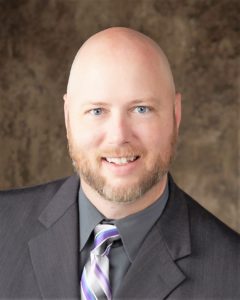
Christopher Petty, M.S.
Extension Agent
Livestock Production and Forage Management
K-State Research and Extension
Southwind Extension District
210 S. National
Fort Scott, KS 66701
(620) 223-3720 Work
(620)224-6031 Cell
[email protected]
Attention cattle ranchers! The Kansas State University Winter Ranch Management Seminar series will take place on Thursday, February 27, from 5:30 until 8:30 pm. At the Woodson County 4-H building in Yates Center, Kansas.
The meeting will begin with a meal, and will feature several informative presentations such as “Value captured from improved production practices: What’s the sale data say” by Ester McCabe from Kansas State University. Other topics include “Forage sampling and testing” by K-State Research and Extension agents Christopher Petty and Wendie Powell, and understanding pregnancy loss in cow herds by Kansas State University Professor and Veterinarian Dr. Gregg Hanzlicek . The program will then finish up with a town hall style question and answer session featuring K-State Research and Extension beef cattle state specialists including Dr. Jaymelynn Farney and Dr. Robert Weaber.
A $10 registration fee is payable at the door, and we would ask that you would please pre-register by Feb 20. To pre-register to attend, or for more information contact Dale Lanham in the Southwind Extension District – Yates Center Extension office at 620-625-8620 or by e-mail at [email protected]. You may also contact Christopher Petty in the Southwind Extension District -Fort Scott office at 620-223-3720 or by e-mail at [email protected].
K-State’s Tarpoff: Plan now to assure successful calving season
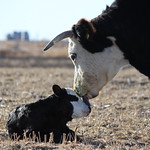
Stocking supplies, cleaning equipment are among management strategies
MANHATTAN, Kan. – Cattle producers who have not yet started the spring calving season still have time to plan ahead, and a Kansas State University veterinarian notes that could make a big difference in having a successful year.
“This is the time for a pre-emptive strike,” said A.J. Tarpoff, a beef veterinarian with K-State Research and Extension. “If you haven’t started calving yet on your operation, now is the time to start thinking about what you can do to be ready.”
Tarpoff noted that producers need to make sure they have the necessary supplies on hand, which may require buying or repairing items and facilities. Then, he adds, set in motion a plan to manage the birth of the new calves.
“Calving books are a phenomenal tool,” Tarpoff said. “It could be just a little pocketbook where you write down who calved, when they calved, if there was difficulty, and whether it was a male or female coming out. There is a lot of information that we can capture about the birthing process so that we’re able to make better decisions within our herd in the future.”
One of the newer management techniques that can lead to successful calving is to feed cows at dusk. “There have been several research studies that show reliable results that a higher percentage of animals are born during daylight hours when we feed the cow in the late evening hours,” Tarpoff said.
Feeding late in the evening, he said, will help decrease midnight or early morning births, which are hard on workers and can make the birth more complicated if there are difficulties.
Tarpoff hosted a series of calving schools across Kansas over the last several weeks to help the state’s producers be adequately prepared to bring in as many healthy animals as possible. The final session for this season was video-streamed on Facebook Live. A recording of that session can be seen on the K-State Research and Extension Facebook page.
One of his recommendations is that producers use a cooler to store tools and equipment: “On cold days and nights, the cooler will help equipment to stay nice and warm. We can close it up and know that our equipment is not going to freeze,” he said.
Tarpoff said producers should check calving chains or obstetric straps for rust, sharp spots or fraying. He also suggests having multiple sets on hand in case there are multiple births at once. The straps should be cleaned, disinfected and hung to dry after each use.
“Once those straps are dried, put them in a closed container so that you don’t re-contaminate them by accident,” he said. “Then, throw them back into your cooler kit.”
Producers should have a meeting with their local veterinarian to discuss situations that may occur, and what medicine or other supplies may be needed to handle those. “They can prescribe the products you’ll need and set you up to be a little more prepared,” Tarpoff said.
Producers can also contact their local extension agent or visit KSUBeef.org for more information on getting prepared for spring calving.
Now is a Good Time to Clean the Kitchen

Kathy S. McEwan
Family and Consumer Sciences Agent
Foods & Nutrition, SNAP-Ed Coordinator
Southwind Extension District – Iola Office
P.O. Box 845, Iola KS 66749
620-365-2242
Kitchens typically get a work-out during the holidays and on Super Bowl Sunday. Since those big food events are past, now is a great time to choose an inside day or two to clean the kitchen.
I suggest removing all items from one or two cupboards at a time before washing the cupboard, inside and outside. Allow time for the cupboards to air dry, and then check the clean, dry cupboards for cracks or holes that will need to be caulked to protect foods from insect or rodent damage. Wash re-usable shelf-liners and dry completely before replacing, or replace with shelf-liner of your choice.
Discarding food products with any signs of insect or other damage, such as a dented can or a cracked glass jar. Sort products by type and date, and look for a “Use-By” date to indicate a date to which a product is expected to retain food quality, flavor and texture.
Look for dates on canned fruits, vegetables or soups, dried food products such as fruit or packaged pastas, and soft packs, such as tuna or sauce mix, as well. When returning food to the clean cupboard – or restocking –place the newest foods behind older foods that should be used first.
Evaluate spices and flavorings that typically lose food quality after opening. Like most foods, spices should be stored in a cool, dry place, used within six months for best quality and replaced after a year. Since dates are not always as obvious on small packages it’s wise to buy smaller quantities of seldom-used spices and to label and date them after purchase.
Don’t confuse “Use-By” dates with “Sell-By” dates, which serve as a guide for grocers stocking fresh food products and removing out-of-date products from shelves.
According to the U.S. Department of Agriculture, Food Safety and Inspection Service, this is what dates mean:
- A “Sell-By” date tells the store how long to display the product for sale; consumers should buy the product before the date expires.
- A “Best if Used By (or Before)” date is recommended for best flavor or quality. It is not a purchase or safety date.
- A “Use-By” date is the last date recommended for the use of the product while at peak quality. The date has been determined by the manufacturer of the product.
- “Closed or coded dates” are packing numbers for use by the manufacturer.
During kitchen cleaning, I also recommend:
* Store pots, pans, or dishes, rather than food, near warm locations like heating vents.
* Store seldom-used items, such as holiday cookie cutters, in out-of-the way or seldom-used cupboards, such as the small cupboard over the refrigerator.
* Group packages such as yeast and seasoning mixes in a small basket or box for easy access.
* Store frequently-used items within easy reach in areas between the shoulders and knees.
* Group baking items such as flour, sugar, baking powder, bowls, and spatulas in a baking center.
* Move picnic or tailgating gear and seasonal tableware to another location.
* Sort utensils and choose one or two favorites of each type; pass still usable items on to students, or others who are setting up a household, or donate to a thrift shop.
* Organize smaller gadgets by type in baskets or boxes within a drawer.
* Designate a cupboard close to the sink and dishwasher to store dishes, table and glassware.
* Empty the refrigerator periodically and discard leftovers or other foods that are past their prime. If possible, remove shelves and drawers for cleaning. Clean the exterior with warm, soapy water and vacuum dust and dirt from under the appliance.
Always remember to read and follow manufacturer’s recommendations for cleaning appliances, cooktops, countertops and cabinets.
More information on food storage is available in the guide, “Cupboard, Approximate Storage Times” available through K-State Research and Extension’s Southwind District offices and online at www.southwind.ksu.edu. For other questions about foods or nutrition, contact Kathy at 620-365-2242 or by email at [email protected].
Family Succession Planning

Finding the time to talk to your family about succession planning may be difficult. Farmers, ranchers and rural business owners may also be uncomfortable with the thought of ending their involvement with the farming business and selling or handing over control to family members. Making the time to develop a solid transition plan for your farming business may ensure that your family’s wishes are met, and emotional stress is minimized.
K-State Research & Extension, in cooperation with Community National Bank will offer a one-day conference designed to introduce succession planning and bring awareness to local resources to support families as they prepare for the future of the enterprise. On Thursday, February 20th at the Bowlus Fine Arts Center in Iola, KS we will discuss topics related to family communication, financial and legal considerations and have a panel discussion from those who have successfully navigated succession.
The transfer of ownership, management and leadership from one generation to another is an important issue for farms, ranches and rural communities across Kansas. All who are involved with a family agricultural operation are encouraged to attend. Cost is only $5, and includes lunch. Registration details can be found by visiting the Southwind Extension District webpage and following the link at www.southwind.ksu.edu .
Future sustainability of the farm or ranch depends on whether the family has planned for succession. The average age of U.S. producers continues to rise and families need to explore options for the transitional feasibility of current and future operators. Succession planning is a step-by-step process where families work together to develop a plan to incorporate the next owner and pass on knowledge and resources that will sustain the operation.
Farm and ranch families may be uncertain of how to begin developing a succession plan and need guidance moving forward. K-State Research & Extension can help the family identify strengths, barriers and opportunities as they pass the farm business on to the next generation. Facilitators will guide participants to resources and individuals who can help them find the information they need to develop an effective succession plan.
Families often do not know where to start with succession. KSU Specialists and local leaders will provide you with a step by step source to guide you in the process and answer your questions.
For further details, please call the Southwind Extension District at 620-365-2242.
Carla Nemecek
Southwind Extension District
Director & Agent
[email protected]
620-365-2242
1 North Washington, Iola, KS 66749
Uniontown 4-H Club December Report
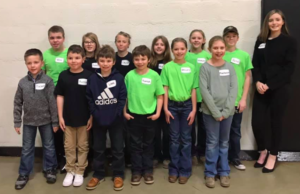
By Marley Sutton, Uniontown 4-H Club Reporter
Uniontown 4-H Club members worked hard this past month not only on their individual events for the Southwind District 4-H Day, but as a club they practiced numerous times on their club skit. On February 1st the club traveled to Moran, Kansas to compete in the event. After performing their skit, “4H Feud”, the club earned a Top Blue placing and will now compete at the Regional 4H Day in Chanute on March 7th.
Several club members also received individual Top Blue Placings. Those members are:
Austin Maycumber and Will Maycumber with their Illustrated Talks, Bareigh Farrell with her Senior Solo and Reading, Marley Sutton, and McKinley Sutton and Kendyl Bloesser with their Junior Reading. Mackinlee Bloesser, Seth Shadden and Hailey Shadden all received a Blue placing with their readings.
K-State Winter Management Seminar RSVP By Feb. 20
|
|
|
|
|
|
Tamegrass Stocker Field Day Feb. 20
|
|
|
|
|
New Vegetables and Flowers to Try in 2020

District Extension Agent, Horticulture
Southwind Extension District
111 S. Butler
Erie, KS 66733
Office: 620-244-3826
Cell: 620-496-8786
Each year, the All-America Selections (AAS) tests and introduces new flowers and vegetables to home gardeners. These plants have proven themselves to do well in trials across North America. The AAS winner label is like a stamp of approval. This year, there were ten vegetables winners, of which seven were tomatoes, and four flower winners.
The vegetable descriptions were taken from All-America Selections material.
Cucumber Green Light F1 – this is an excellent mini cucumber that can be grown on stakes or poles. It will yield 40 or more spineless fruits per plant. Fun fact: This cucumber is parthenocarpic – meaning the flowers are all females and the fruits are seedless without needing to be pollinated.
Pumpkin Blue Prince F1 – vigorous trailing vines produce 7-9 pound beautiful blue flattened pumpkins with non-stringy, deep orange flesh with savory sweetness. These pumpkins are as pretty as they are delicious. Of all the varieties trialed, Blue Prince was first to flower and fruit which is beneficial for gardeners with a shorter growing season.
Watermelon Mambo F1 – these are perfectly round melons with a beautiful dark green rind and deep red flesh. The sweet crisp flesh is extremely tasty and holds well if you can’t harvest them right away. Each 9” fruit will weigh about 11 pounds at maturity. With a smaller seed cavity, they almost have the look of a seedless melon but with the superior taste of a seeded melon. The judges said this was one of the easiest watermelons they have grown because of high seed germination and vigorously healthy vines.
Coleus Main Street Beale Street – this is the first-ever coleus to be named an AAS winner. This is an outstanding variety that exhibits deep red foliage and holds the color extremely well in the garden. The rich color does not fade, bleach or get spotty as the season moves into late summer. This lush, bushy plant grows uniformly and does not flower until very late in the season. It can be grown in full sun or full shade – making it an ideal foliage for anywhere in the garden.
Echinacea Sombrero Baja Burgundy – this plant will add a bold accent to sunny gardens with its vibrant, deep violet-red blossoms. After being trialed over three tough winters, AAS judges noted this plant for its standout hardiness, sturdy branching, and floriferous blooming habit. Birds and pollinators will certainly flock to this deer-resistant beauty making it a dual purpose plant.
Nasturtium Tip Top Rose – a strong yet compact nasturtium with unique and showy rose-colored flowers. Judges described the color as a “warm, bright rose with less of the black undertones typical in nasturtium flowers.”
Rudbeckia x American Gold Rush – bright, golden-yellow flowered perennial with black centers. This compact, upright domed-shaped beauty has narrow 2-inch wide hairy foliage and
has resistance to Septoria leaf spot. It showed no signs of the fungus even in wet, humid conditions. It is incredibly easy to grow and pollinators love it. It is destined to be the new rudbeckia staple for gardens and landscapes!
For a complete description of the 2020 All America Selections, including the seven tomato varieties, visit www.all-americaselections.org
Krista Harding is a K-State Research and Extension Agricultural agent assigned to Southwind District. She may be reached at [email protected] or by calling 620-244-3826.
K-State Research and Extension is an equal opportunity provider and employer.
Credit Report vs Score

Joy Miller
K-State Research and Extension Southwind District
620-223-3720 or [email protected]
Many people use the terms “credit report” and “credit score” interchangeably, but they are not the same. Your credit report is a detailed account of your credit history, while your credit score is a three-digit number signifying your credit-worthiness. You are entitled to three free credit reports per year, but you generally have to pay to view your score. Although a credit score is a useful piece of information, it is ultimately calculated using the information in your credit report. Therefore, paying for a credit score is typically unnecessary, but ensuring the accuracy of the underlying data in the report is crucial.
What is a credit report? Your credit report is a collection of all of your credit activities within the past 7-10 years. It includes your payment history for your credit cards and other loans such as auto loans and mortgages; public records related to your finances such as bankruptcies, tax liens, and court judgements; and a record of everybody who has looked at your report within the past two years. You can request one free credit report every year at AnnualCreditReport.com from each of the three main credit agencies: Equifax, Experian, and TransUnion. Companies use the information in your credit report to calculate credit scores.
What is a credit score? Your credit score is calculated using the information in your credit report. Financial institutions use your credit score to decide whether to offer you a loan or credit card. Your credit score also determines the interest rates and credit limits that financial institutions offer to you. Although many people believe they have one credit score, in fact everybody has several credit scores–different companies calculate your credit score in different ways. Your scores change constantly based on your financial activities. Regardless of the agency, your score will consist of five main components: payment history, amount of current debt, length of credit history, amount of new credit, and types of credit used. Companies use each of these components to calculate a three-digit score, ranging from a low around 300 to a high around 900, which again varies across different types of scores. In the United States, the most widely used credit score is the FICO score. Your credit score is not available for free through AnnualCreditReport.com.
How can I improve my score? You can improve your score by paying your bills on time, using less of your available credit balance, not opening multiple credit accounts over a short period of time, keeping older credit cards open, and using different types of credit responsibly.
It is important to check your credit report regularly to make sure it is accurate and up-to-date. K-State Research and Extension Check Your Credit email program is free and registration is easy, visit southwind.k-state.edu under Upcoming Events.
